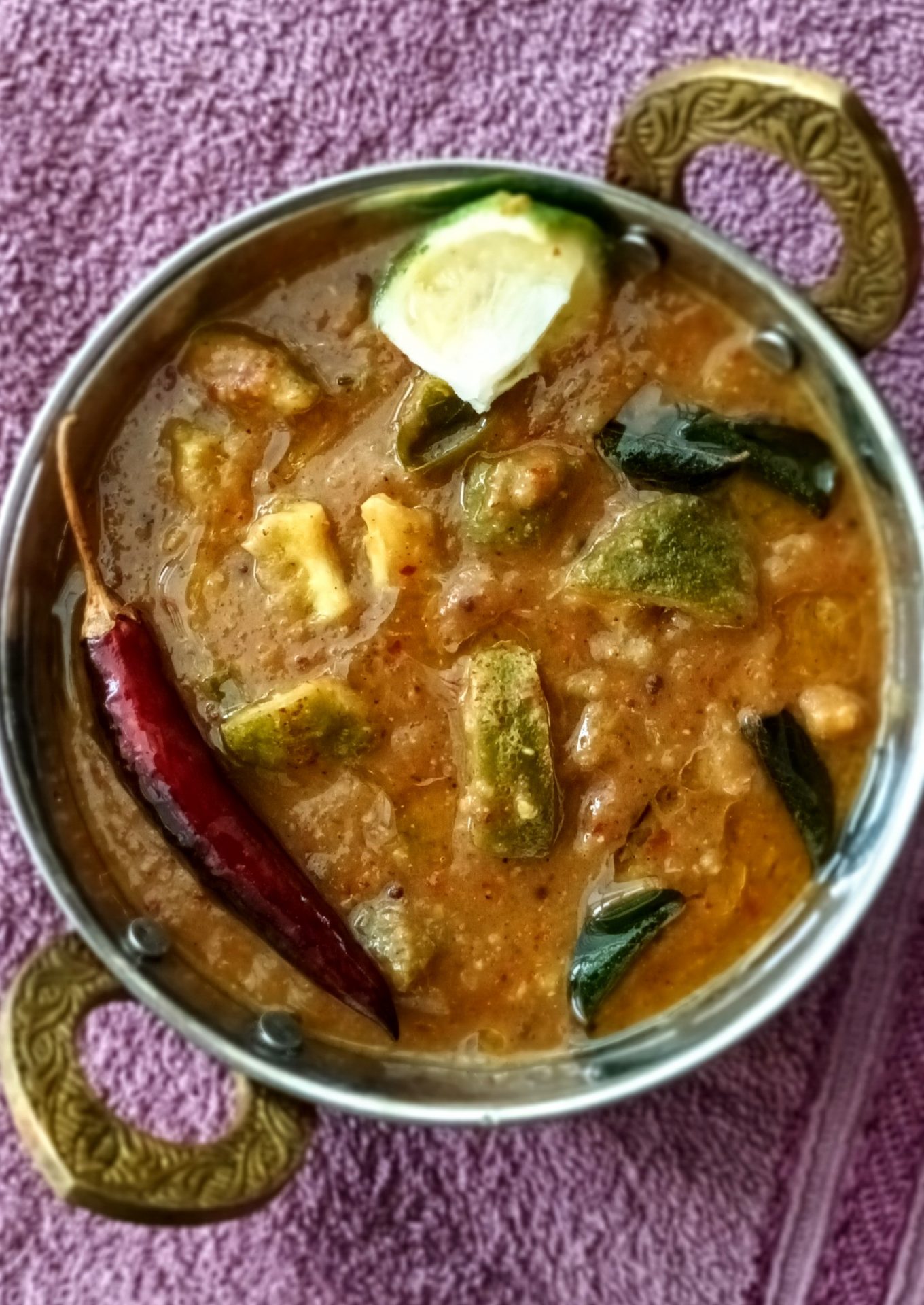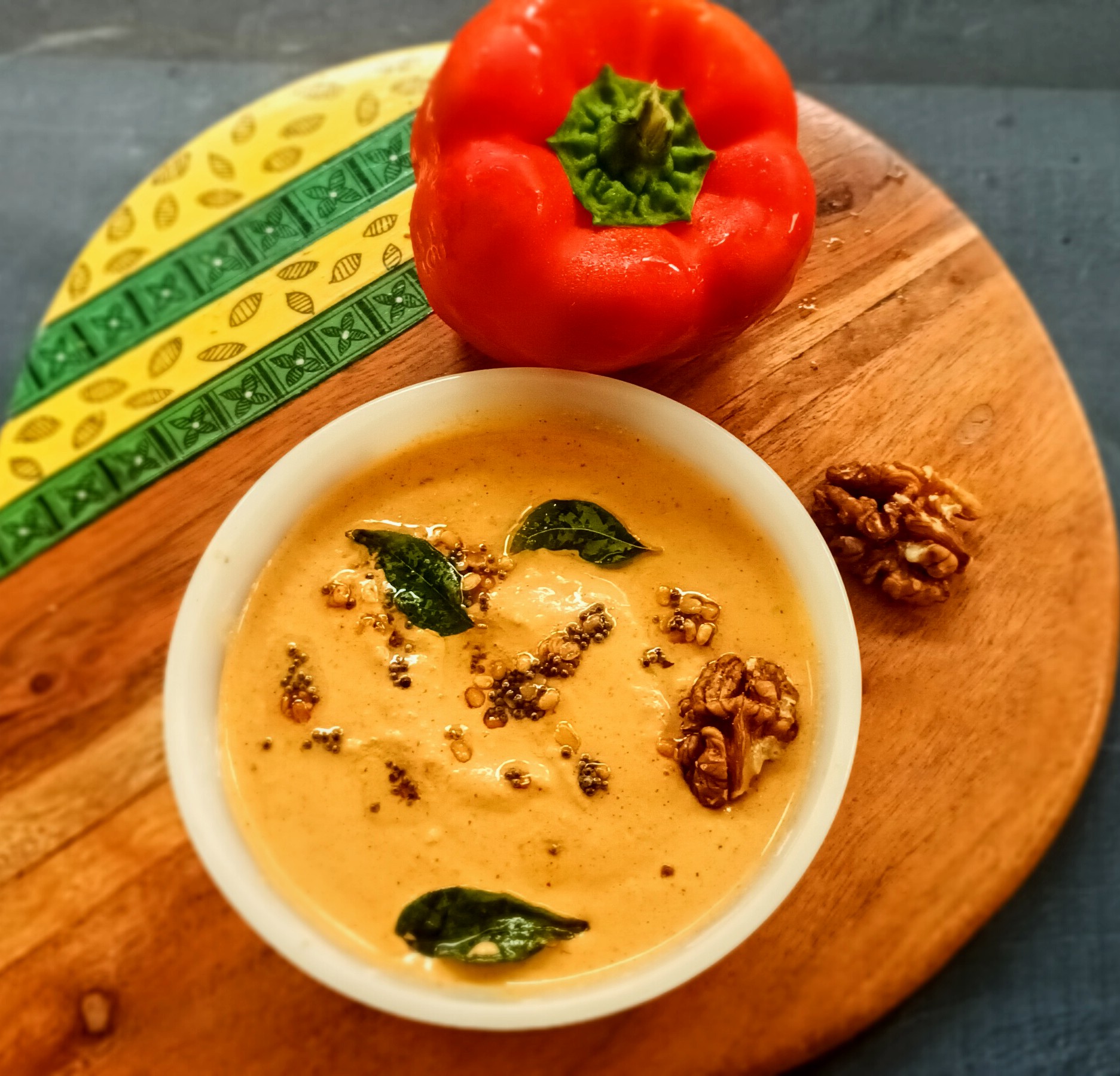Narthangai Kuzhambu/ Citron Curry
Jump to recipeCitron, also called Narthangai in Tamil is a type of lemon with a rough exterior. The fruit is large with a thick rind, but the juice that is extracted is far less compared to its size. The citrusy fragrance can be recognized from a feets distance, that’s how fragrant these lemons are. Citron is an original variety from which all other hybrid lemons have come.
These lemons have healing and digestive properties and have been used extensively in traditional medicine and in Asian cuisine.
What Narthangai/ Citron means to a Tamil household- it is considered a sort of ” Sarva roga nivarini”, a one stop for all ailments. Whenever someone says they have indigestion or a nausea, they are immediately put on a diet of curd Rice, with a dry Citron pickle. This pickle is made by salting the Citron and sun drying the Citron until all moisture is lost. This is then stored in a container, and lasts for years. While recuperating from fever, when the mouth is dry, and the tongue still finds everything bitter, this Citron pickle is given to them.
In South India, there are many traditional recipes that are made with this Citrus fruit. While the pickles are more popular, a sweet and tangy chutney called the Pachadi is made with the rind. Citron Rice is another favorite recipe. Check out the recipe here- https://youtu.be/9Mro4iesIvs
The current recipe of Narthangai Kuzhambu/ Citron curry is a traditional recipe, which is almost forgotten. I came to know of this dish recently while chatting with my husband’s aunt. My husband mentioned to her, that our friends sent us Narthangai/ Citron fruit from their farm, and we made pickle, Citron Rice, Pachadi, and are still left with some, and don’t know what else to make. She immediately suggested this dish, and mentioned that it is a regular at her house. Thereafter, I got on a call with her to take down the recipe and tried it right away. The curry was so delicious, that we are certainly making it again during the season . Such traditional recipes are slowly getting forgotten, and that’s why I wanted to document this recipe for the blog. I’m hoping people will try and pass it on to the next generation. While we may cook and enjoy gourmet food, it is these traditional recipe that really bring satiation. This healthy curry with many medicinal benefits is a must try during the short season. Just the zest/ rind of thus fruit is enough to elevate your mood.
While you are here I request you to take a look at other recipes like- Lemon Rice, Beans Parupu Usili, Parupu Urundai Kuzhambu, Pidi Karunai kuzhambu, Pineapple Rasam, Omavalli Rasam, and more.
To watch video scroll down

Ingredients
- Citron/ Narthangai 3 numbers. Chop 2, and squeeze the juice of one.
- Tamarind paste 1 tbsp or extract pulp from gooseberry size tamarind
- Turmeric Powder 1/2 tsp
- Salt as required
- Jaggery 1 tbsp
- Sesame/ Til oil 2 tbsp
- Mustard seeds 1 tsp
- Curry Leaves a few
- Asafoetida 1/2 tsp
Ingredients to be Dry Roasted
- Raw Rice 1 tbsp
- Methi seeds/ Fenugreek seeds 1/2 tsp
- Tuvar Dal/ Pigeon Peas 1 tbsp
- Coriander seeds 1 tbsp
- Kashmiri Red chillies 3-4
- Chop 2 of the Citron into cubes, just as you would for pickle. Remove the seeds, and set aside. Squeeze the juice of 1 Citron and set aside.
- Heat a heavy bottomed pan or Kadai. When hot, put the raw rice, and the Methi seeds, and dry roast until the rice changes colour, and the Fenugreek seeds turn brown and aromatic. Remove on to a plate.
- To the same Kadai, add Tuvar dal, Coriander seeds, and Kashmiri red chillies, and dry roast until the dal begins to turn brown. Take care not to burn the Dal and spices. Cool completely.
- Transfer both the dry roasted ingredients into a blender, and grind to a powder. Set aside.
- Now pour Sesame oil into the same Kadai. When hot, add the mustard seeds. When they crackle, add the chopped Citron. Fry well in oil ( important step)
- Further add Turmeric powder and curry leaves and continue to fry the Citron in oil. The rind of the Citron should begin to discolouration, and must turn soft. You should be able to cut through the rind, with the ladle.
- Now pour the tamarind pulp, and add 1 cup water. Allow the ingredients to boil. The raw taste of the tamarind must go away, and the curry should thicken. Takes about 7 minutes on medium flame.
- Now add Salt, and the ground powder, and let it cook for a few minutes. Now add the Jaggery, and stir.
- Finally, turn off the flame, and add the reserved Citron juice( important step). Stir, and the curry is ready to serve.
- Enjoy this healthy, detox curry with hot rice, topped with ghee. Pair it with your favorite stir fry.
Notes:
Three important steps in this recipe
- Dry roasting the ingredients without burning, and in the suggested manner. Don’t be tempted to put them altogether in one pan, and dry roast. Different ingredients roast at different temperatures. Roasting separately add more flavor.
- Frying the chopped Citron in oil, until the rind turns soft. This is important because, the Citron pieces will not cook completely in tamarind pulp.
- Adding the Citron juice finally is what makes this curry so flavourful and unique. But it’s important to turn off the flame before adding the juice. Heating/ boiling anything Citrus leads to loss of Vitamin C.
Video for Making Narthangai Kuzhambu
Get yummy recipes delivered to your inbox!
Be the first one to know about our new recipes. Leave your email below and get notified as soon as new recipes are published!




